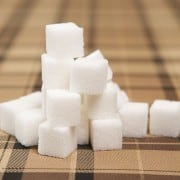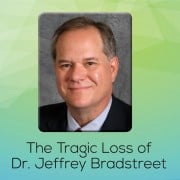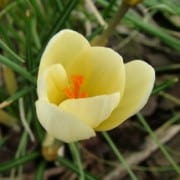CranioSacral Therapy and the Central Nervous System
Interview by the editor, Sheila Rogers, MS
Dr. Upledger, would you start by explaining what the craniosacral system is?
The craniosacral system (CSS) is a newly acknowledged physiological system, along the lines of the cardiovascular or digestive system. The CSS is comprised of a tough waterproof membrane, the dura mater, which lines and compartmentalizes the skull, and lines the spinal column and the more delicate membranes: the arachnoid membrane and the pia mater. It includes the body parts that directly affect the membranes, such as the skull bones (most of which are attached to the membrane) and the vertebrae (though their attachments are not so direct).
In addition, a semi-closed hydraulic system controls the flow of fluid into and out of the membranes. This system is responsible for the production, circulation, and reabsorption of the cerebrospinal fluid. It maintains the physiological environment in which the brain and nervous system develop and function.
And craniosacral therapy?
Craniosacral therapy (CST) is a light-touch, hands-on therapy that focuses on bringing the CSS into balance.
What do you mean by balance?
Typically, the production and reabsorption of the craniosacral fluid within the dura mater results in a continuous rise and fall of pressure. Generally, homeostatic mechanisms allow for self-correction and self-balancing within the body. But if for some reason the body is unable to accommodate these pressure changes, a buildup of pressure can occur which can contribute to dysfunction and ill health, especially within the central nervous system. The musculoskeletal, vascular, lymphatic, respiratory, and endocrine systems can also be affected.
An experienced craniosacral therapist can palpate the craniosacral motion anywhere on the body. A lack of symmetry in this motion can help indicate where the problem lies, though it will not necessarily reveal precisely what the problem is. Restoring the symmetry often results in a reduction in abnormal symptoms.
The fluid pressure rises and falls about ten times per minute. This rhythm is independent of the respiratory or cardiac rhythm. The inflow of cerebral spinal fluid is turned off or on as signals are given to it, and the volume within the sac rises and falls correspondingly. When the volume rises to a certain point, stretch receptors in the system cause the production of fluid to stop temporarily. When fluid pressure drops and the volume goes down, then the stretch receptors relax. The receptors, mostly located in the sutures (the joints between skull bones) are capable of slight movement. The bones are attached to the membranes. When the fluid expands, then the sutures stretch.
What about the professionals who dispute your theory that cranial bones can move?
Well, they’re wrong. Actually, it’s not theory — it’s fact. The movement is very slight, but it’s significant enough to allow expansion of the craniosacral fluid, and to allow for necessary adjustments. Through studies at Michigan State University, this movement has been measured on life adult primates and fresh human cranial bones, in contrast to chemically preserved specimens which indeed are rigid. Physicians in the Mediterranean area have been aware of cranial movement for many years.
You’ve mentioned that the CSS has a direct impact on the nervous system. Do you feel CST has a role in treating autism, attention deficit hyperactivity disorder (ADHD), Tourette syndrome, or learning problems?
I’ve not had a lot of experience with Tourette syndrome — those children just haven’t come my way. But we have done a great deal of work with autism and ADHD. I would say it’s most successful with hyperactivity, and the improvement can be very significant. Autistic children may also show improvement but the therapy has to be regularly applied until the child reaches full growth.
With ADHD, once you make the necessary correction, it’s over — you don’t have to worry about it anymore. The correction, when appropriate, usually involves resolving a compression in the neck area (atlas occipital region) that occurs during the birth process. I estimate about 50% of individuals with ADHD fall into this category.
What about learning problems?
We’ve had some excellent results with reading and math disabilities. I certainly don’t suggest that all learning problems are due to CSS dysfunctions. But I would emphasize that brain function problems can often be related to a CSS dysfunction, and unfortunately this tends to be overlooked.
Am I correct in assuming these teachings evolved from cranial osteopathy?
They evolved from two sources. I got my first glimpse of the CSS during a surgical procedure that involved lifting some vertebrae off the back of the neck to get at a calcium plaque that was on the outside layer of the dura mater membrane. We wanted to maintain the intactness of the membrane itself, so the membrane was not cut—though usually it would have been. As a result, the integrity of the hydraulic system I mentioned previously was maintained.
I observed the rise and fall of fluid pressure I’ve described. It was actually the first glimpse at a physiological system that had not yet been recognized as such. I didn’t realize I was looking at what the cranial osteopaths would have liked to have seen.
After I viewed this, I took a course in cranial osteopathy that taught some of the techniques that could be used to change this system. At the time they didn’t understand what the system was all about—they were just doing things that worked. However, I had seen the system and had a reasonable understanding of it from a physiological perspective. I then adopted and adapted some of the techniques from cranial osteopathy to fit a primarily membranous hydraulic system, rather than focusing on bone motion per se, which is what the cranial osteopaths were doing.
What would your advice be to parents bringing a child into this world at this time?
Try to provide osteopathic manipulation and CST for the mother during at least the last three months. The purpose would be to remove constrictions and abnormal tension patterns from the pelvis. Then, as the delivery date approaches, tissues can be loosened manually to help ensure a smooth delivery. I recommend they steer clear of vacuum extraction.
Why is that?
Usually vacuum extraction is used because the baby is stuck. Consider what happens when a vacuum is strong enough to pull a baby through the birth canal. It’s quite a bit of force. What happens is that all the elements that are somewhat mobile inside the skull are pulled to the top of the head. That means you get fluid congestion, excess blood and, I’m sure, some rupture of tiny capillaries in the brain which irritates the brain tissue.
When I work with children with problems, and they have been vacuum extracted, I can always feel it—there’s a glob of energy and tissue at the cap of the skull. Cesarean section is OK, but the doctors should be requested to let the fluid pressure inside the uterus change very slowly. If you make a large incision in the uterus for an emergency C-section to let the fluid out, there is often an instantaneous loss of fluid, and that can be a tremendous decompression problem for the infant, much like when a diver surfaces too quickly. If the fluid can decompress more naturally as when the water typically breaks, it gives the child a better chance. When forceps must be used, they should be used cautiously and symmetrically.
I’m waging a strong campaign that every newborn should have a CST evaluation within the first few days after delivery. I predict that we could eliminate about half of the brain function problems we see in the schools today.
What does it take to be a good craniosacral therapist?
It’s not really a question of one’s formal background. It’s a question of sensitivity and experience with CST. Neither an occupational, massage, or physical therapist, a DO, MD, or dentist will necessarily have an advantage in learning these techniques because this is new functional anatomy for all of the. The main question is, do they have a license to put their hands on people and work with them. If so, they may decide to add CST to their repertoire of techniques.
Update: We are sad to report that Dr. Upledger, an Advisory Board Member for ACN Latitudes, passed away in 2012. His guidance will be greatly missed.









